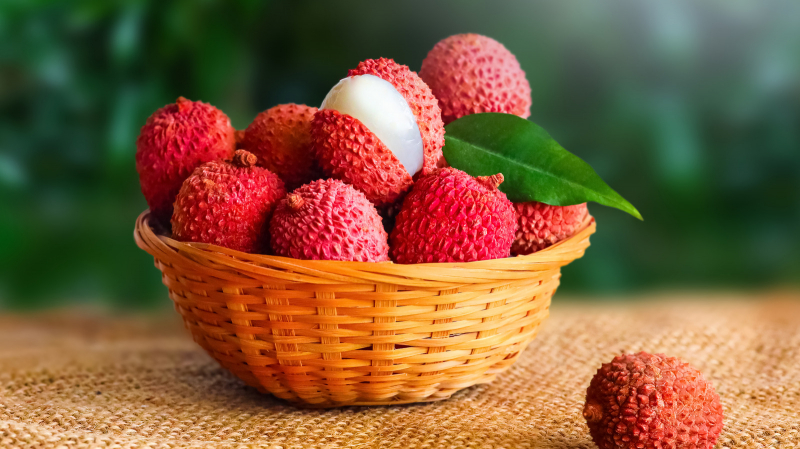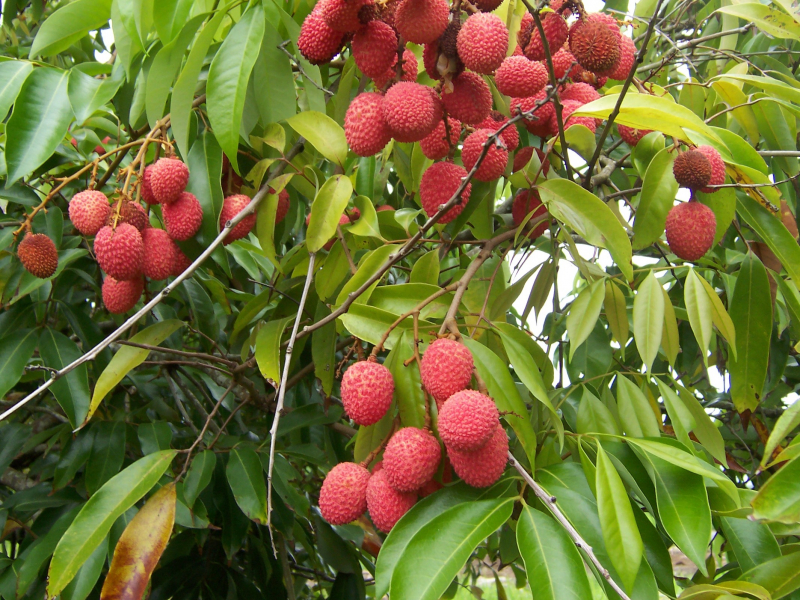Lychee
Lychee is a monotypic taxon and the sole member in the genus Litchi in the soapberry family, Sapindaceae. It is a tropical tree native to the Guangdong, Fujian, and Yunnan provinces of Southeast and Southwest China, where cultivation is documented since the 11th century. China is the main producer of lychees, followed by India, other countries in Southeast Asia, the Indian Subcontinent, Madagascar, and South Africa.
The lychee produces fleshy fruits that, depending on the environment, cultivar, and location, mature in 80–112 days. Fruits can be up to 5 cm long and 4 cm wide, have a variety of shapes, including round, ovoid, and heart-shaped, and weigh about 20 g. The thin, tight skin is smooth or covered in tiny, pointy protuberances that have a harsh texture, and it is green when juvenile before ripening to red or pink-red. The layer of translucent white fleshy aril with a floral scent and a sweet flavor is visible once the inedible rind has been removed. Raw lychee fruit is 69% water, 17% carbohydrates, 1% protein, and contains negligible fat. The raw pulp is rich in vitamin C, having 72 mg per 100 grams – an amount representing 86% of the Daily Value – but contains no other micronutrients in significant content.












